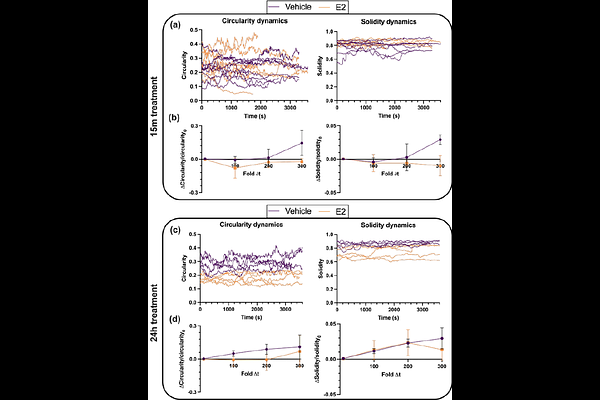Estradiol alters actin and protrusion dynamics in endometriotic epithelial cells

Estradiol alters actin and protrusion dynamics in endometriotic epithelial cells
Banerjee, S.; Herr, C.; Losert, W.; Stroka, K.
AbstractEstradiol (E2), a sex steroid hormone molecule, plays a key role in regulating the actin and shape dynamics of cells in a multitude of normal and pathophysiological conditions. While cytoskeletal rearrangements, membrane dynamics, and cellular protrusions are intimately involved in cell motility and invasiveness, little is known about the impact of E2 on these processes in estrogen-dependent epithelial cells. In this study, we quantified the impact of E2 on cell shape and actin dynamics in 12Z human endometriotic epithelial cells transfected with LifeAct-GFP and observed with lattice lightsheet microscopy, a new imaging technique fast enough to capture 3D dynamics on second timescales. E2, when applied for 24 hours, significantly decreased cell circularity, solidity, and rate of change of circularity, indicating a transition to a more elongated and less variable morphology. 24-hour E2 treatment also induced the formation of large membrane protrusions reminiscent of invadopodia and led to a more disordered flow of actin within those protrusions. However, these effects were not seen after 15 minutes of E2 treatment, suggesting that longer-term signaling is required to drive these structural changes. Together, these results suggest that E2 modulates actin polymerization and membrane protrusion dynamics in endometriotic epithelial cells and may prime them for cell invasion. This work highlights a role for hormonal signaling in mediating cytoskeletal plasticity and migratory cell phenotypes.